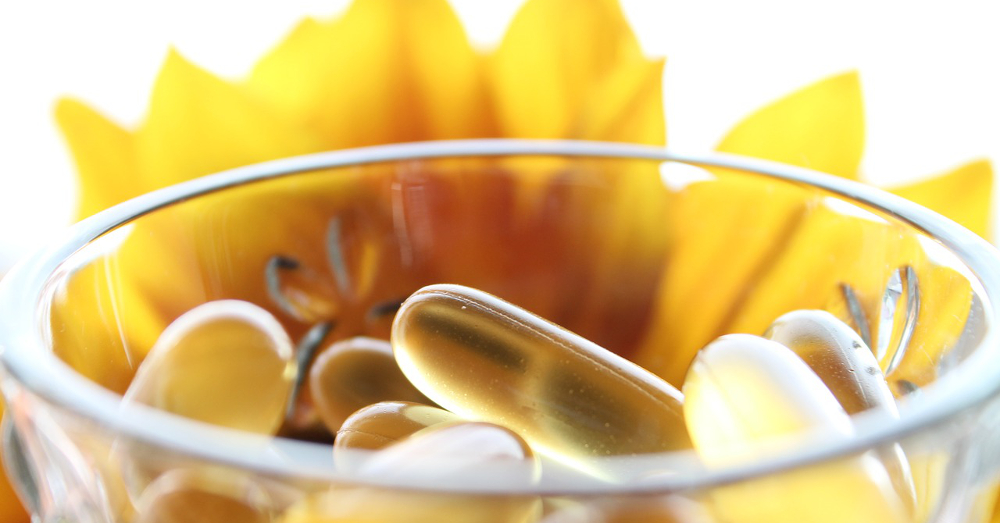
Research on Astaxanthin Demonstrates Significant Whole Body Benefits
Astaxanthin, which is part of the carotenoid family, is thought to be the most potent antioxidant nature has to offer, and mounting research suggests it has broad-spectrum, system-wide health benefits.
February 20, 2017 | Source: Mercola.com | by Dr. Joseph Mercola
Astaxanthin, which is part of the carotenoid family, is thought to be the most potent antioxidant nature has to offer, and mounting research suggests it has broad-spectrum, system-wide health benefits.
It’s derived from Haematococcus microalgae, which produces astaxanthin as a protective mechanism to shield the fragile algae from harsh ultraviolet (UV) light and other environmental stressors.
Astaxanthin’s benefits are so numerous, I’ve written several articles to cover its activities, from radiation protection, to eye, brain, lung1 and heart health.
Other health benefits noted in a scientific review published in Molecular Nutrition and Food Research in 2011 included the prevention and treatment of:2 “cancers … metabolic syndrome, diabetes, diabetic nephropathy … gastrointestinal diseases, liver diseases … male infertility and HgCl₂-induced acute renal failure.”
Importantly, astaxanthin is a very potent anti-inflammatory, making it useful for virtually any inflammatory condition, including joint problems such as rheumatoid arthritis, carpal tunnel syndrome and tennis elbow.
It’s also been shown to improve athletic performance, in part by ameliorating exercise-induced fatigue. It has broad versatility3,4,5,6,7,8 and exceptional safety, even at extremely high doses.
What Makes Astaxanthin So Unique?
Astaxanthin is related to beta-carotene, lutein and canthaxanthin. However, its unique molecular structure makes it both more potent and unique than other carotenoids.
For example, astaxanthin has 550 times stronger antioxidant power than vitamin E, and is 6,000 times more potent than vitamin C. Other key differences that sets astaxanthin apart from other carotenoids include the following five features:
• Like other antioxidants, astaxanthin donates electrons to neutralize free radicals.
However, while this free electron donation depletes most other antioxidants, astaxanthin has a massive surplus that allows it to remain active far longer — at least one order of magnitude longer than most other antioxidants.
The astaxanthin also remains intact, meaning there are no chemical reactions to break it down, which is what occurs in most other antioxidants.
• Another major difference is in the number of free radicals it can handle. Most antioxidants, such as vitamins C, E and various others, can typically handle only one free radical at a time.
Astaxanthin can address multiple free radicals simultaneously, in some cases more than 19 at the same time. It does this by forming an electron cloud around the molecule. This is known as the electron dislocation resonance.
When free radicals try to steal electrons from the astaxanthin molecule, they’re simply absorbed into and neutralized by this electron cloud, all at once.
• One of astaxanthin’s most unique features is its ability to protect both water- and fat-soluble parts of the cell. Carotenoids are typically divided into water-soluble or fat-soluble, but astaxanthin belongs to an in-between group that can interface between both water and fat.
This means the astaxanthin molecule can affect and expand the biolipid membrane of ALL cells. It’s not simply floating around in your bloodstream; it actually integrates into the cellular membrane.
This includes the mitochondrial membranes of your heart cells, which is one of the reasons it’s so beneficial for your heart. Since mitochondrial health is a key factor in aging, supporting mitochondrial health is also one of the primary strategies to help slow down the overall aging process.
It also has the ability to cross the blood-brain barrier, which is part of its neuroprotective ability.
• Another key feature is that it cannot function as a pro-oxidant. Many antioxidants will act as pro-oxidants (meaning they cause rather than combat oxidation) when present in sufficient concentrations.
This is one of the reasons why you don’t want to go overboard taking too many antioxidant supplements. Astaxanthin, on the other hand, does not function as a pro-oxidant, even when present in high amounts, which makes it both safer and more beneficial.
• Astaxanthin acts on at least five different inflammation pathways, making it a very potent anti-inflammatory, and maintains balance within the system.
Astaxanthin Helps Protect Your Skin From the Inside Out
Well over 100 studies demonstrate the safety of astaxanthin, even at mega-doses as high as 500 milligrams (mg) per day. About the only side effect ever documented at higher doses is the possibility of developing a slight reddening of the skin, which most people tend to find attractive.
Astaxanthin is also very beneficial for skin health in general, as it helps protect against UV (sun) damage,9,10,11,12 increases skin elasticity, reduces fine wrinkles and improves the moisture level in the skin.
When it comes to UV radiation protection, astaxanthin specifically helps protect against UV-induced cell death.
Unlike topical sun block, astaxanthin does not actually block UV rays, so it doesn’t prevent UVB from converting into vitamin D in your skin; it simply protects your skin against damage. This protective effect is so potent studies even show it helps protect against:
• Total body irradiation,13 primarily by scavenging intracellular reactive oxygen species (ROS) and reducing cell apoptosis (programmed cell death
• Burn-wound progression, by reducing oxidative stress-induced inflammation and mitochondrial-related apoptosis14
